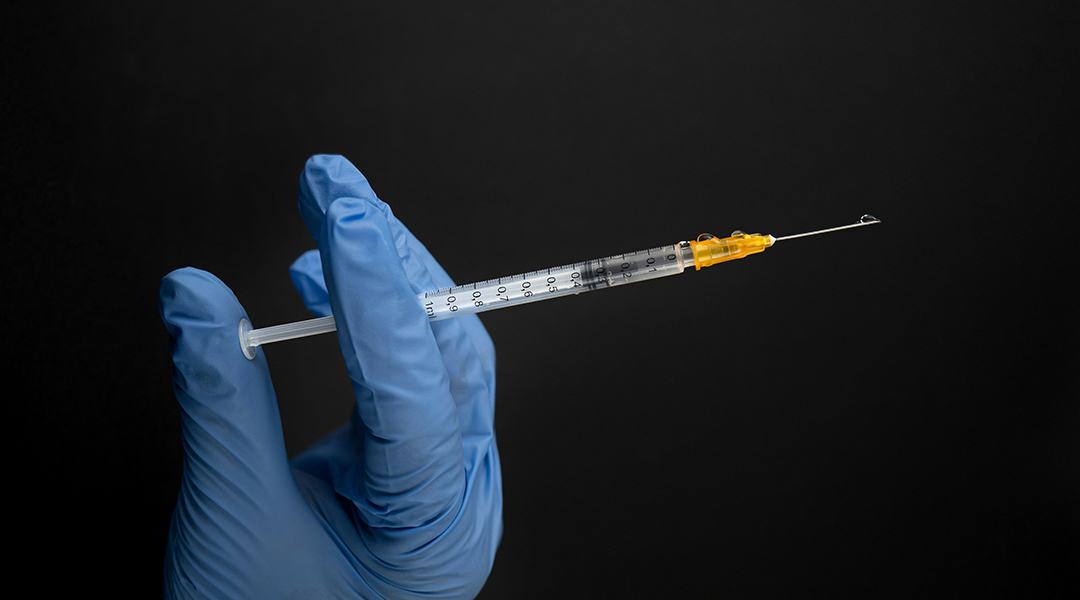Researchers have developed an injectable anesthetic delivery system that prolongs pain relief while minimizing side effects. “[We] aimed to develop a local anesthetic sustained-release device that targets a neuron’s ability to adapt to pain with high drug loading, providing better post-operative pain relief and a longer duration with fewer side effects and low opioid consumption,” stated Jingdun Xie, a professor in the Department of Anesthesiology at Sun Yat-sen University’s Cancer Center, and one of the study’s authors.
Local anesthesia blocks sensation in the nerve connected to the specific area being operated on, allowing a patient to be awake during surgery. Although local anesthetics have fewer side effects than general anesthetics and require lower doses of opioids, their effects quickly wear off after a single injection.
Xie and his colleagues were able to extend the pain-relief window of ropivacaine, a well-known local anesthetic, by encapsulating it in a soft polymer material called a hydrogel. The hydrogel was made from hyaluronic acid, a naturally occurring substance in the body that plays a crucial role in keeping tissues lubricated and hydrated.
When hyaluronic acid is linked to form a network-like structure, a shell is created around ropivacaine, forming microspheres. The shell prevents ropivacaine from immediately dissolving when injected, lowering the diffusion rate of the drug and slowing its release.
Improving drug loading and controlled release
According to Xie, the manufacturing process of conventional drug carriers made from other biomaterials such as liposomes tends to be complex. Polymer microspheres or nanoparticles made from polylactic acid or polyesters have low drug-loading capacities because water-soluble drugs are difficult to encapsulate in these water-repelling materials. Their biocompatibility is also poor, meaning they degrade slowly in the body and are likely to trigger the immune system.
Hydrogel-based microspheres can help solve some of these problems. “The hydrogel-based microspheres can achieve a high loading of water-soluble local anesthetics, long-term [controlled] release, and good biosafety due to their unique physicochemical properties and biocompatibility,” Xie said.
Xie and his colleagues prepared the microspheres using microfluidics, a technique that allows small volumes of liquids to be precisely manipulated on a micro-sized chip patterned with channels.
The microchip contained three inlets and one outlet. Two of these inlets were used to create the core and shell components of the microspheres, known as the “internal” and “external” water phases, while the third inlet contained mineral oil.
“First, the [internal] water phase was sheared by the oil phase to form droplets,” Xie explained. “The overall microsphere size was accurately controlled by adjusting the velocity ratios of the oil and water phases.”
The external water phase contained sodium bicarbonate, which serves to recrystallize ropivacaine hydrochloride into a water-insoluble form of the drug. This “alkalization” step allows more ropivacaine to be loaded into the microspheres and prevents its sudden release.
“In situ alkalization transforms water-soluble ropivacaine hydrochloride into water-insoluble ropivacaine, which is loaded in the hydrogel microspheres, avoiding the rapid release of ropivacaine hydrochloride due to its strong water solubility in a liquid environment,” Xie told us.
Prolonging the effect of ropivacaine
After fabricating the microspheres, Xie and his colleagues formulated an injectable gel composite containing dexmedetomidine, a sedative that has been shown to extend the action time of ropivacaine.
“As neural plasticity is a contributing factor to pain, drug combinations can relieve pain by regulating neural plasticity,” he said. Neural plasticity is the nervous system’s ability to change in response to experiences, including injury.
“Pain is often caused by neural plasticity alteration, which we call ‘sensitization’,” Xie explained. “Drug combinations prolong the treatment duration and directly target neural plasticity for a long time, contributing to pain relief via sensitization inhibition.”
The researchers tested different formulations of their drug-delivery system in animal models to determine how long it could block sensory and motor nerves.
They found that the gel composite co-loaded with ropivacaine and dexmedetomidine provided the longest-lasting pain relief. After injecting the gel, nerve sensation was blocked for 36 hours and motor function for 24 hours.
These results are promising, but more work needs to be done to improve the drug carrier’s biodegradability. In its current design, about 60% of the drug carrier degrades in the body after two weeks, so it would take around a month to fully degrade.
“In the future, we need to optimize the material and prepare technology to improve the hydrogel’s degradability to within one week,” Xie said.
Reference: Jingdun Xie et al., Injectable hydrogel delivery system with high drug loading for prolonging local anesthesia, Advanced Science (2024). DOI: 10.1002/advs.202309482
Feature image credit: Mika Baumeister on Unsplash

















